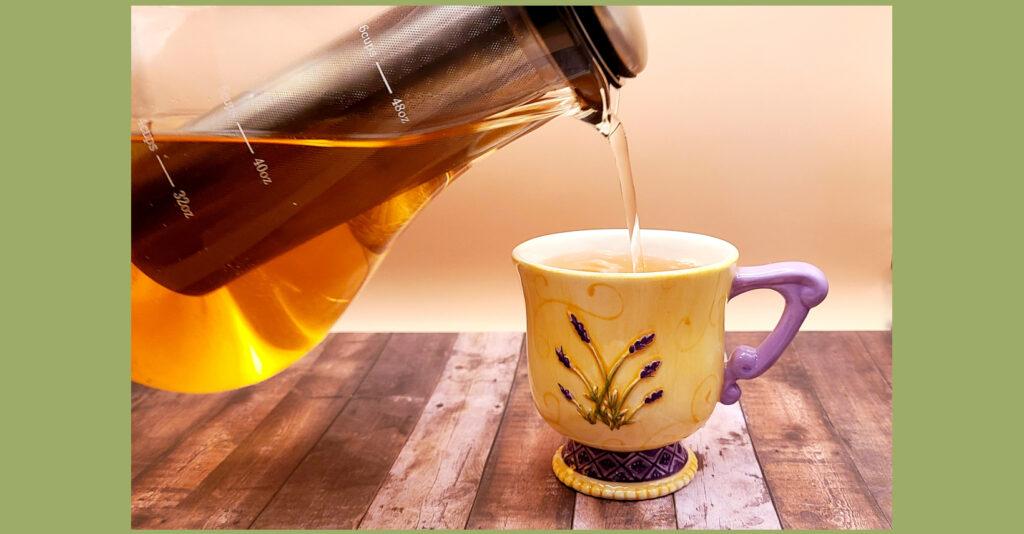
Making Herbal Tea Delicious
Yes! Herbal tea can be delicious. Here are a few tips to make the experience of creating and drinking herbal tea that much more enjoyable!
I love drinking herbal tea. In fact, I drink several cups a day. What I don’t love is an herbal tea that doesn’t taste good! I mean, really, not many people would drink cupfuls of something terrible tasting even if it is super healthy! (I’d pass.)
Here are my tips for making drinking herbal tea deliciously enjoyable.

[This post contains affiliate links. If you make a purchase through one of these links I may earn a commission. This does not impact your price. For more information, please see our disclosure.]
In this Post:
Experience the Herbal Tea Blend
Mindfully appreciate your herbal tea—each cup is an experience in self care. This experience starts the moment you begin to craft a tea blend. Here are some things to note as you’re blending, brewing, and drinking your herbal tea.
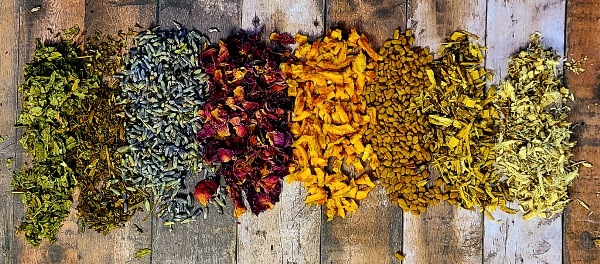
Aromas of the herbs. As you open each herb container and take out what you need, inhale deeply. Stir the herbs together and inhale deeply. Sip from your cup and inhale deeply. Not only does each deep breathe help ease tension, you will also be benefiting from the aromatherapeutic properties of the whole herbs. For me, the aroma of a blend is a big part of the tea drinking experience.
Colors of the herbs. Notice the variety of greens in leaves, the reds, blues, and pinks of flowers, the golden citrus peels, the many tans and browns of roots, barks, and seeds. And then enjoy the colors of the blend. Sometimes I might add more of an herb based simply on the appearance of the mixture.
Textures and shapes of the herbs. Some herbs are light and fluffy, while others small and dense. Herbs can be crinkled, wrinkly, or smooth. Some of them have sharp cut edges, some are rounded or delicate.
Color of the tea as the herbs infuse into it—golden, green, red, or even blue! This is why I often use a glass tea cup, borosilicate tea kettle, or even a glass liquid measuring cup for steeping!
The tea cup you’ve chosen. How does it make you feel? What memories are associated with it? Does it have special meaning? How does it feel in your hand?
Temperature of the herbal tea as you drink it—hot, warm, iced.
Effect of the herbs on your body. What do you feel—relaxing, calming, energizing, tightening, breath-opening, soothing, relieving, warming, cooling? Make note of where you feel that effect—mouth and throat, head, shoulders, lower back, chest, stomach, limbs.
And, of course, appreciate, or recognize, the taste of the different herbs in your tea—bitter, sweet(ish), pungent, sour, salty.
Herbal Tea Tasting Sips
That first and second sip are, to me, the most important of the whole experience. The first sip seems to prime the taste buds and body for the subsequent sips. It’s in the second sip that I can truly begin to appreciate the flavor and effect.
However, when I drink an herbal tea I want to do more than appreciate the herbs, I want to enjoy the taste, too. So, how do you make an herbal tea that can, frankly, be quite bitter, taste so good you are happy to drink it all and then make another cup?

Steeping Time Matters
Steeping Leaf & Flower Herbs
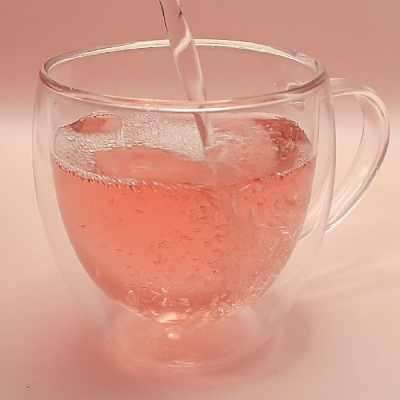
Most leaf and flower herbs require very little heat to extract their flavorful goodness. Too high a temperature or too long a steep and you end up with a bitter herbal tea.
Combine leaf and flower herbs with freshly boiled (not boiling) water. I bring my water to a boil, remove from the heat, allow it to sit for a few minutes, and then add my herbs.
Steep leaf and flower herbs for 5-20 minutes. A shorter steep time will produce a light, delicately flavored tea. A longer steep time encourages a deeper color and a more aromatic, therapeutic tea. Steeping leaves and flowers longer than 30 minutes will generally produce a bitter tasting tea.
Steeping Roots, Barks & Seeds
In general roots, barks, and seeds require the higher heat and longer steep of a decoction to extract the therapeutic benefits. These are generally simmered for at least a few minutes and then allowed to steep for 30 minutes or even several hours.
Sometimes a root, like licorice, is added to a blend of leaves and flowers simply to provide sweetness rather than much therapeutic benefit.
And some roots, like marshmallow, are quite happy to share their therapeutic properties in cold water!

Herbal Tea Steeping Methods
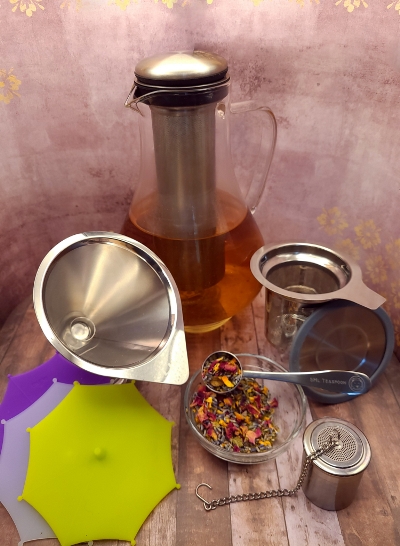
If you’re using a standard sized tea ball or infuser to steep your tea, use no more than a slightly mounded teaspoon of herbs. Any more than that and the herbs will become too compact as they expand in the hot water. This will restrict the flow of water around the herbs and reduce the flavor, color, and therapeutic effect of the tea. And, it’s just simply a waste to use more herb than you need.
A teaspoon of herb in 8-10oz of water will make a pleasant, lightly flavored, cup of tea.
If you like to make 2-3 cups of herbal tea at a time or a stronger 8-10oz cup of tea, consider an oversized tea infuser or a reusable coffee filter.
You can use several teaspoons of herb in a large infuser and the herbs will still have room to expand. Or you can add your herb directly to the pot and then, after steeping, pour the tea through the reusable coffee filter into a serving vessel or tea cup.
A stove-top-safe infusing pitcher makes making a full pot of tea (5-6 cups) easy. Kettles made from borosilicate glass allow you to appreciate the color development during steeping.

💚PRO TIP: Waste Not! Regardless of the type of infusing method, get the most flavor and therapeutic value out of your herbs by pressing them with a spoon (or the handle of a spoon) when removing them from steeping.

Okay, so now we’re back to the beginning: Making Your Herbal Tea Delicious!
Enhancing the Color of Herbal Teas
We drink with our eyes first, so beautiful, jewel-colors can enhance the tea-drinking experience. These are my favorites for enhancing the color of a tea:
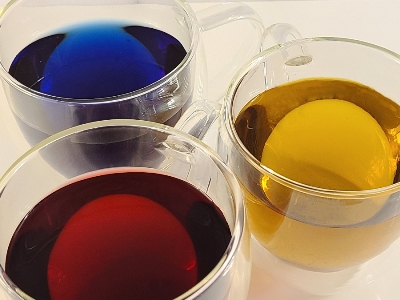
Golden Chamomile (Matricaria chamomilla / M. recutita)—a long gentle steep creates a golden sunshiney yellow; and the delicate honey-like flavor is a bonus.
Red Hibiscus (Hibiscus sabdariffa)—just a pinch of Hibiscus flower will provide a rosy tint to your tea which can range from a deep red to a soft rose; the refreshing flavor is a bonus.
Blue Butterfly Pea flower (Clitoria ternatea)—my go-to for a blue hue! A few blossoms is all you need; and its herbaceous floral taste is pleasant in small amounts.
Enhancing the Flavor of Herbal Tea
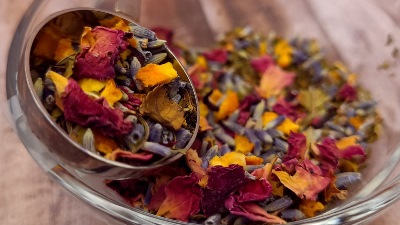
When selecting “delicious” herbs for making tea, I also take into consideration their therapeutics and actions. These are some of my favorite herbs for making a delicious drink-by-several-cups-full herbal tea:
Sweet Orange peel (Citrus x sinensis)—tart and sweet; offers a familiar, citrusy taste and aroma; nutrition rich (vitamins, fiber); supports digestive health.
Delightful Rose petals (Rosa spp.)—delicate and floral; imparts a comforting taste and energy; soothing, tonic, emotionally supportive.
Calming Lavender (Lavandula angustifolia)—powdery, herbaceous, and aromatic; offers a subtle floral flavor and aroma; calming, relaxing, eases tension, emotionally supportive.
Fresh Nettle leaf (Urtica diocia)—clean, green taste reminiscent of the aroma of a freshly mowed alfalfa field; imparts a soft green tint (try Nettle on its own to experience the taste, aroma, and color of this lovely herb); Mother Nature’s “cleansing” herb.
The Mints—cooling and fresh, Spearmint (Mentha spicata) has a sweeter taste than the powerful Peppermint (Mentha x piperita); mints add a revitalizing taste and energy.
Naturally sweet Stevia Leaf (Stevia rebaudiana)—clean and sweet; cuts bitterness and enhances sweetness; natural “sugar replacer;” may support cardiovascular health.

☀️Herbal Spotlight: Stevia: The Sweet Leaf
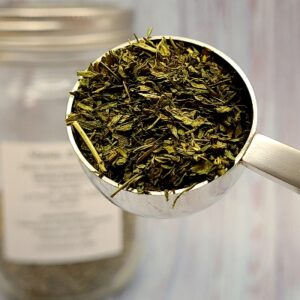
When you use the actual Stevia leaf, you will find that you no longer need the highly processed powdered or liquid stevia extract you get from the grocer.
Just a pinch added to any herbal tea blend will greatly improve the palatability, and you likely won’t have to add any additional sweetener.

Other flavor enhancers include:
Rich Cinnamon “Cassia” (Cinnamomum burmanii)—smooth and sweet; provides a mellow recognizable taste and aroma; break sticks into chips when making tea; warming, stimulating, drying to tissues.
Soothing Marshmallow root (Althea officinalis)—add a tablespoon to 2 cups cool water and allow to infuse for several hours (or overnight), then strain into a clean container and add a portion to your herbal tea; offers a sweet taste and pleasant unctuous mouthfeel; moistening, soothing, cooling.
Mapley Fenugreek seeds (Trigonella foenum-graecum)*—requires higher heat and long steep time; brew separately and add to taste to steeped leaf/flower blend; a culinary herb with an earthy maple-syrup taste; moistening, warming.
Sweet Licorice root (Glycyrrhiza glabra)*—earthy but sweet; often used in confectionery as a natural sweetener; moistening, soothing, enhances therapeutics of other herbs in blend (use in small amounts).

🔶️*Special Safety Considerations
The vast majority of herbs are generally recognized as safe to use (GRAS). Some can be used in large amounts for a long time. Others should be used in small amounts or only for a short time.
Before beginning any therapeutic herbal regimen, please talk with a qualified professional. Here are specific safety considerations for two of the herbs in this post:
- Licorice root: Avoid using if you have an existing cardiac, liver, or kidney condition, have high blood pressure, or are taking blood pressure medications.
- Fenugreek seeds: If you are pregnant, please talk with a qualified professional before using.

Mom’s Recommended Suppliers
You can find all of my favorite tea herbs, along with infusers, baskets, and steeping lids on Mom’s Herbal Favorites on Amazon. Here are my preferred suppliers for these “taste good” herbs:
- Butterfly Pea Flower (Clitoria ternatea):
- Incas by Asiya Life, organic (on Amazon).
- Chamomile Flower (Matricaria chamomilla / M. recutita):
- Elanen naturals, organic (on Amazon)
- Starwest Botanicals, organic (on Amazon)
- homegrown from seed from Botanical Interests.
- Cinnamon Sticks (Cinnamomum spp):
- FGOrganics, organic (on Amazon)
- Starwest Botanicals, organic (SWB and Amazon).
- Fenugreek Seeds (Trigonella foenum-graecum):
- Anthony’s Goods, organic (on Amazon).
- Hibiscus flowers (Hibiscus sabdariffa):
- Mountain Rose Herbs, organic
- Starwest Botanicals, organic (Direct and Amazon)
- Marshmallow Root (Althea officinalis):
- Elanen naturals, organic, whole (on Amazon)
- Elanen naturals, organic, powdered (on Amazon).
- Lavender Buds (Lavandula spp):
- FGOrganics, L. angustifolia, organic (on Amazon)
- Anthony’s Goods, Lavandula spp, organic (on Amazon).
- Licorice Root (Glycyrrhiza glabra):
- Elanen naturals, organic (on Amazon).
- Orange Peel (Citrus x sinensis):
- Starwest Botanicals, organic (on Amazon)
- Mountain Rose Herbs, organic
- Make your own, like this!
- Stinging Nettle Leaf (Urtica dioica):
- Mountain Rose Herbs, organic
- Peppermint Leaf (Mentha x piperita):
- Elanen naturals, organic (on Amazon)
- Mountain Rose Herbs, organic
- Rose Petals (Rosa spp):
- TooGood Botanics, organic (on Amazon)
- Starwest Botanicals, organic (on Amazon).
- Spearmint Leaf (Mentha spicata):
- Elanen naturals, organic (on Amazon)
- Mountain Rose Herbs, organic
- Homegrown from seed from Seed Needs (on Amazon).
- Stevia Leaf Herb (Stevia rebaudiana):
- Organic Way, organic (on Amazon).
This information has not been evaluated by the Food and Drug Administration and is not intended to diagnose, treat, cure, or prevent any disease. It is for educational purposes only.
All recipes provided are for personal use and are not designed for re-sale or large-scale manufacturing.
Please consult your doctor, naturopath, herbal practitioner, or other qualified health professional for medical advice and before starting any herbal regimen, particularly if you are pregnant or nursing, have any existing medical conditions, or are taking any medications.
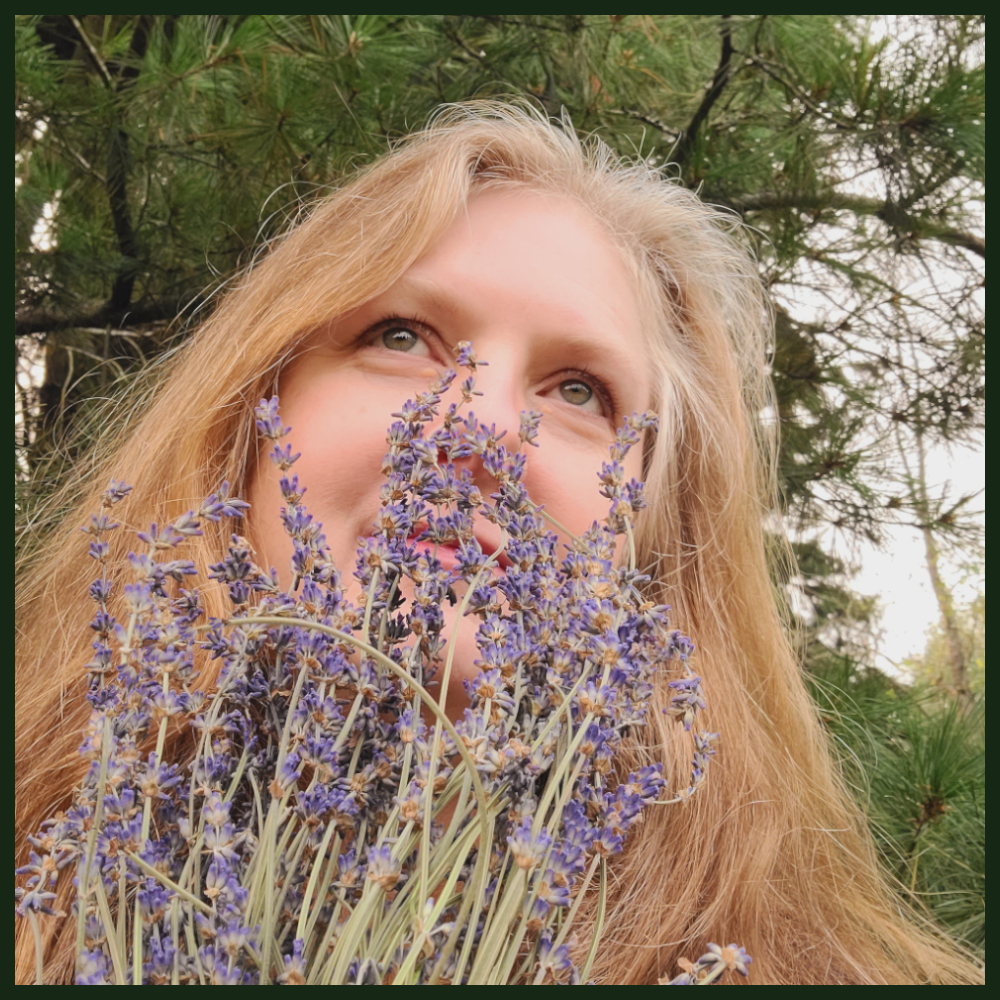
Chris P | Author, Certified Aromatherapist, Natural Skin Care Formulator
Chris (“Mom”) enjoys formulating bespoke aromatherapy, skin care, and herbal products to support her family, pets, friends, and clients. She also loves experimenting with recipes in the kitchen. An avid reader, writer, and lifetime learner, Chris enthusiastically explores research rabbit holes and then writes about her discoveries.💚 (Learn more >>)


